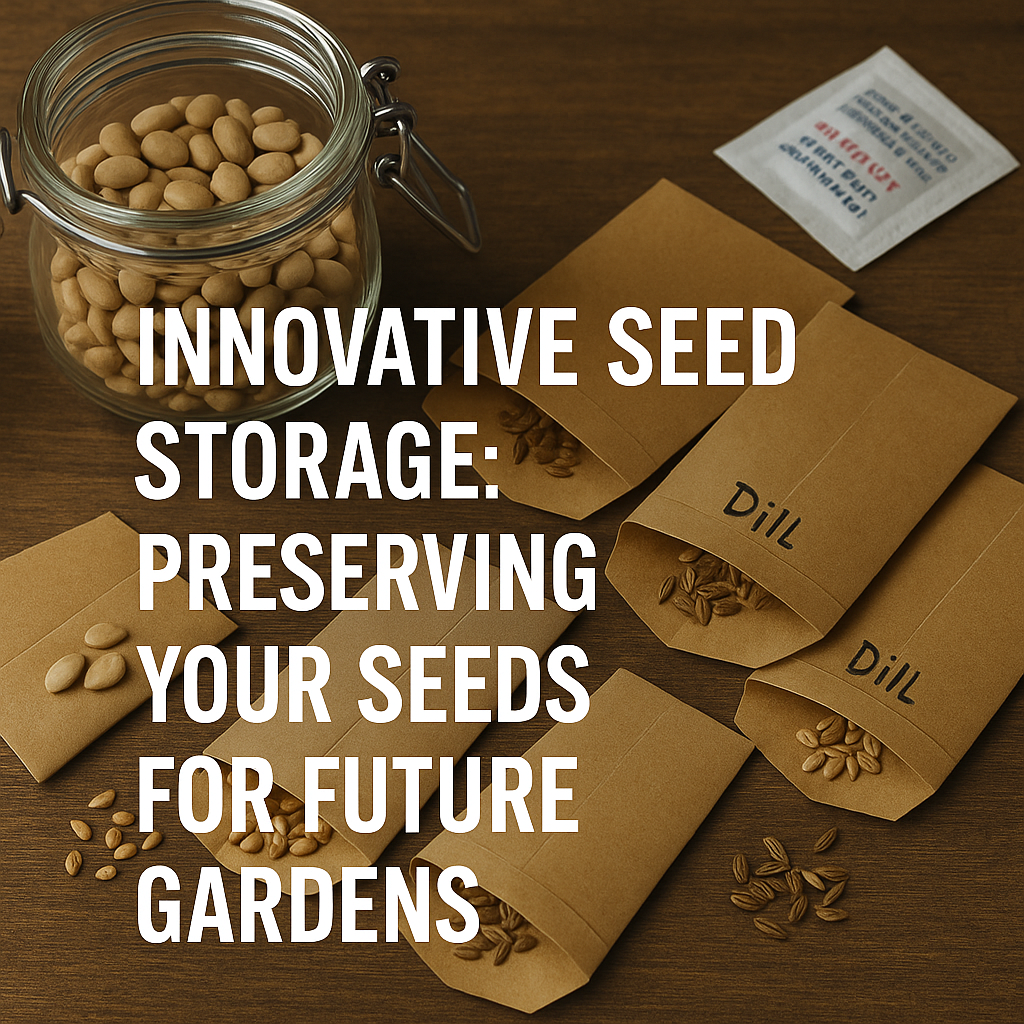Every gardener knows the quiet heartbreak of watching a beloved variety vanish. That tomato that tasted like childhood. The sunflower that once reached your roof. Seeds carry more than the promise of plants—they carry memories, flavors, stories.
Preserving seeds isn’t just smart. It’s a form of love—for the earth, for your food, and for the seasons yet to come.
But too many home gardeners lose seeds to time, moisture, or pests. Whether you're saving heirloom varieties or simply want to avoid buying new packets every year, learning how to store seeds the right way can keep your garden thriving for decades.
Let’s break down practical tips and creative, long-term seed preservation methods that actually work.
1. Choose Only Healthy, Viable Seeds
Before you store, start with strong genetics. Only collect seeds from your healthiest, most vigorous plants. Avoid seeds from stunted or diseased specimens—bad traits can carry forward.
Pro Tip: Do a float test. Drop your seeds in water. Discard floaters—they’re likely duds.
2. Clean and Dry Thoroughly
Moisture is seed storage enemy #1. After harvesting, make sure seeds are completely dry—usually 1-2 weeks in a well-ventilated space.
Creative tip: Place seeds between two coffee filters and store them in a paper bag with a handful of dry rice. It pulls out excess moisture gently.
3. Use Airtight Containers
Oxygen and humidity shorten a seed’s lifespan. Switch to airtight glass jars, mylar bags, or vacuum-sealed pouches. Include a food-safe desiccant pack or powdered milk in a tissue to absorb moisture.
Try This: Upcycle old spice jars. They're the perfect size and easy to label.
4. Label Everything—Clearly
Don’t trust your memory next spring. Use waterproof labels to record:
Seed variety
Harvest date
Source (especially if it's from a rare or heirloom plant)
Include growing notes if you can. Your future self will thank you.
5. Store Cool, Dark, and Dry
Seeds love the cold—if it’s dry. Keep them in a fridge or freezer in airtight containers. Just let them come back to room temp before opening to avoid condensation.
Ideal conditions: 32–41°F (0–5°C) and low humidity.
6. Create a Seed Bank at Home
Turn a shoebox or toolbox into a DIY seed vault:
Line it with foil or insulation
Add silica gel packets
Sort seeds by type, season, or planting date
It’s low-tech, but high reward.
7. Rotate and Test Seeds Annually
Even stored well, seeds lose viability over time. Test a few each season by germinating them in a damp paper towel. Track germination rates and plan when to refresh your stock.
Why Buy Seeds from Neera Seeds?
You can store seeds perfectly—but you need to start with quality.
Neera Seeds offers:
Genetically strong, high-germination seeds
Chemical-free, organically grown varieties
Rare and heirloom collections you won’t find in big-box stores
Fresh stock from trusted growers
Our seeds are made to last—and thrive. Whether you’re growing for beauty, food, or biodiversity, Neera Seeds gives your future garden the best start.
Final Thought
Seed storage is more than a garden chore. It’s about preserving potential. With the right methods, your seeds can last for years—and your garden’s legacy can live on.
So invest in your future. Store wisely. And start with the seeds that give you the strongest foundation: Neera Seeds.


